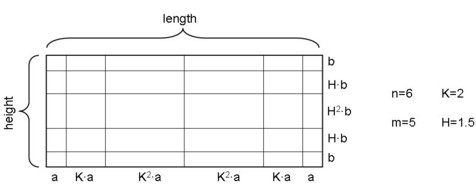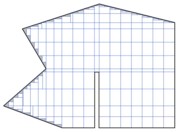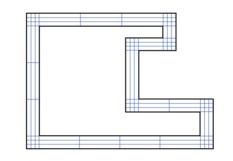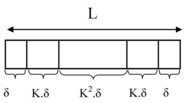Tube conductor mode: meshing
Introduction
This section details the four meshing methodologies available for the tube conductors, as well as the parameters that need to be filled out by the user for their implementation.
Uniform meshing
The technique is not implemented in the same manner if the conductor cross-section is rectangular, variously-shaped full or variously-shaped hollow, as described in the table below. Consequently, the configuration required from the user varies from one case to the other.
| Cross-section | Description |
|---|---|
| rectangular |
|
| variously-shaped full |
Consequently, the global mesh of the section can become non-conform. |
| variously-shaped hollow |
|
Geometric meshing
This meshing technique is available only for the rectangular cross-sections and is efficient mainly at high frequencies.
When choosing a geometrical mesh for a section of a tube conductor, the user is invited to fill out:
- the numbers n and m of the PEEC elements according to which to subdivide the two sides of the profile (width and height);
- the K (by width) and H (by height) concentrations of these elements. These values, which must be positive, represent the relationship between the sizes of two successive elements.
The Flux PEEC software automatically determines the size of all the elements:
the basic element (a by the width L and b by the height T) is calculated by means of the following formulas:

The calculation of b relies on the same formulas where L, K, n are replaced by T, H and m, respectively.
An example of geometric mesh is shown in the figure below:

It is worth noting that for a concentration value equal to 1, the user has indeed chosen a uniform mesh in the direction considered.
It would be reasonable from the user to make sure that the size of the a and b elements be comparable to the thickness of the skin depth, in order to correctly model the phenomenon of electromagnetic field diffusion. To do that, he must:
- choose the number n of the elements he wishes, for example 3, 4, 5, or 6;
- calculate the optimal value of K by means of the following formulas:

where δ is the thickness of skin depth that can be estimated by the expression reported in § Choice and definition of the application.
Automatic mesh in function of the frequency
This technique is considered the most efficient, as it combines a very good quality of the results obtained by the minimization of the number of meshes.
The frequency considered by the Flux PEEC software can be the frequency of reference of the project or another one chosen by the user, the algorithm of the mesh is identical.
The technique is not applied in the same manner if the section is rectangular, variously-shaped full or variously-shaped hollow, as described below.
| Cross-section | Description | ||||||
|---|---|---|---|---|---|---|---|
| rectangular | The number of elements in the two directions of the cross-section is
imposed by the software; it depends on the skin depth thickness (and
implicitly of the frequency) and it is always inferior or equal to five. The
details are presented in the table below:
|
||||||
| variously-shaped full |
Depending on the thickness of the skin depth (and implicitly on the frequency), the software proceeds to the positioning of the mesh elements in the following way:
|
||||||
| variously-shaped hollow |
The used algorithm is very similar to the one used for the uniform mesh of variously-shaped hollow cross-sections, except that:
|
||||||





